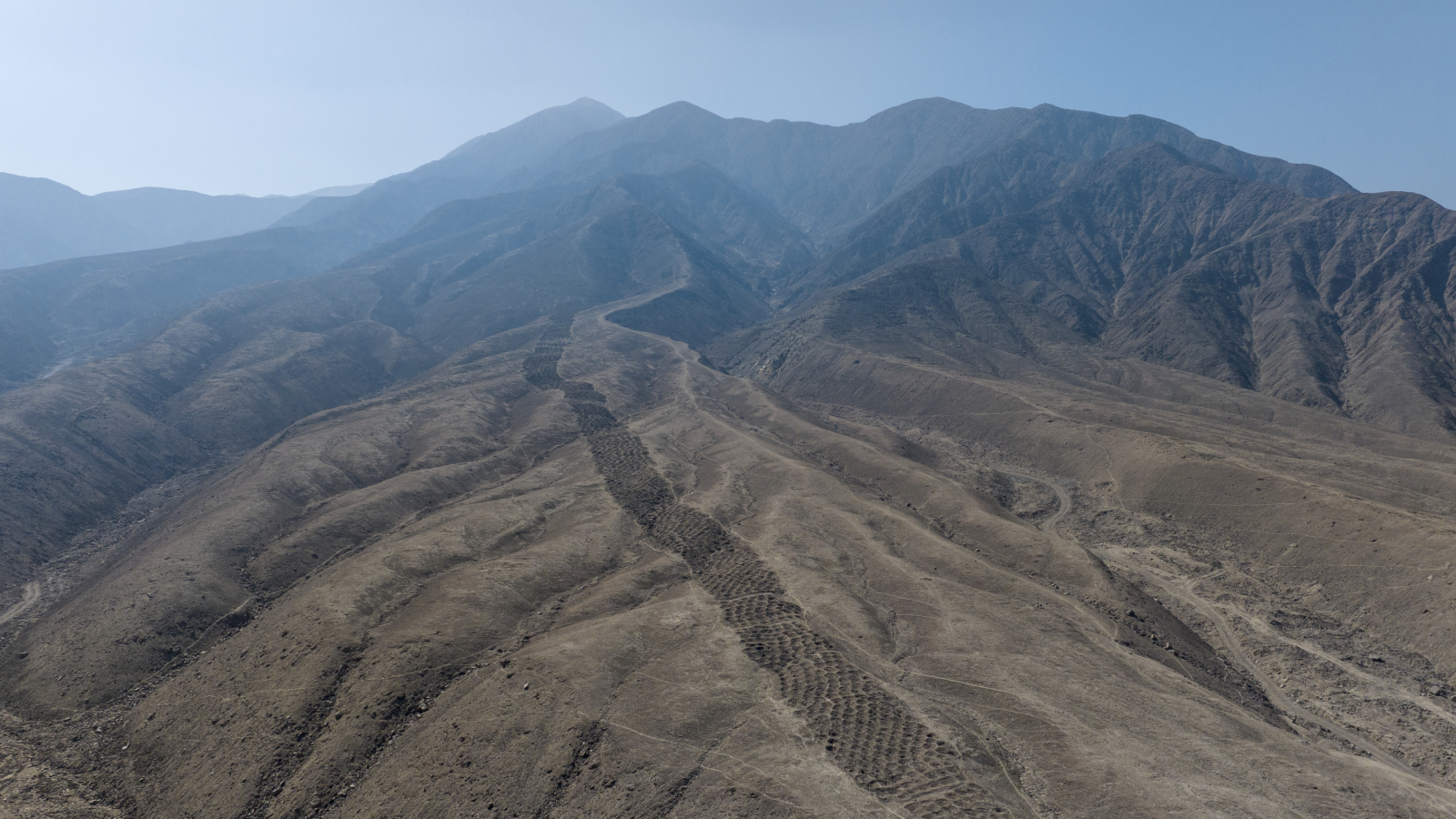Eat the Old: Could Mass Cannibalism Solve a Future Food Shortage?

The global human population is set to hit 7 billion on Oct. 31, and by century's end it will stand at 10 billion, according to the United Nations. That's a lot more mouths to feed.
There's a very good chance that generating food from traditional farming and livestock practices will not be able to keep pace with this boom. What if a worldwide food shortage were to become so terribly dire that people resorted to eating . . . people?
In such a dreadful event, the most-sensible first choice for meals might seem to be the elderly. After all, a fifth of those 10 billion humans will be at least 65 years old, and less physically able than the rest to contribute to what remains of society. [5 Ways the World Will Change Radically in the Next Century]
Mercifully, researchers say that feeding on the old – or, really, anyone – would not solve world hunger. In the short term, eating old people might satisfy the gruesome dilemma of how to feed the population and lower it at the same time. But cannibalism on a global scale could never work in the long term.
"If everyone is eating each other, the species won’t last very long," said James Cole of the University of Southampton 's Center for the Archaeology of Human Origins.
Part of the problem is that humans are just not very meaty compared with cows, pigs, deer and other animals. Even if we heavily supplemented our diet of human "long pork" with grains, we'd have to consume more fellow humans per year than we could ever hope to replace with new babies.
"Even if social conventions broke down to such a catastrophic extent that we began eating each other wholesale, humans are simply not that nutritionally viable when compared to other mammals," Cole noted.
Get the world’s most fascinating discoveries delivered straight to your inbox.
Who's coming over for dinner?
Science fiction has taken a stab at what institutionalized cannibalizing of the elderly might look like. In the 1973 movie "Soylent Green" a powerful corporation peddles rations of the eponymous food flakes. The miracle foodstuff is advertised as algae, but that turns out to be not true. Instead, humans who die are being processed into the colored wafers. As the police detective played by Charlton Heston memorably screams near the end upon learning the unsavory truth, "Soylent Green is people!"
In reality, members of the species Homo sapiens and its ancestors have long devoured one another, both for basic survival and ritualistic reasons. "Cannibalism certainly seems to have a long tradition within our species," said Cole. But, save for a few instances, cannibalism has been mostly a delicacy, or tied to important cultural events, rather than a consistent source of nutrients. [10 Weird Things People Do Every Day (and Why)]
Cut marks found on hominid bones suggest our ancestors engaged in meat removal as far back as 780,000 years ago, Cole said. Many historical cultures have dabbled in cannibalism: The Aztecs supposedly had human butcher shops and the Maori in New Zealand were known to consume slain enemies. In the present day, tribes in the Amazon and Papua New Guinea still practice a degree of cannibalism.
In a typical predator/prey relationship, cheetahs will target easier-to-catch gazelles – the sick, wounded, young and old. Researchers have found no evidence of such a strategy in human- survival cannibalism.
"If there was a deliberate selection process, it is not visible to us today," said Cole. "It would appear that a range of individuals from infants, adolescents to adults were being cannibalized."
A manly and womanly diet
Supposing that trend changes and a desperate, starving populace figures it's time to cull the herd of a couple of billion elder humans. How would the predators fare?
At the outset, bellies would be full.
"My own guess is that, while steady-state nutritional cannibalism doesn't work well – we grow too slowly, compared to chickens or herbivorous domesticated mammals – as an offset to excessive growth it clearly would pass muster," said Steven Vogel, a biologist at Duke University.
But only for so long. Based on numbers from Vogel's book "Prime Mover: A Natural History of Muscle" (W.W. Norton & Co., 2002), a human body on average can provide around 45 pounds of slightly fatty meat and other edible parts. (An all-meat diet, if organs are consumed as well, can supply all the body's nutrients, as demonstrated by Eskimos.)
Those victuals translate into about 60,000 kilocalories. Humans need 2,000 to 3,000 kilocalories a day for sustenance. (The "calories" listed on nutritional labels are actually kilocalories.) Assuming there was barely enough chopped-up man-meat to go around and the cannibals were getting only 10 percent sustenance per day based on a 3,000-calorie diet, a single person could provide 200 days of sustenance to the person who eats him.
Even so, Vogel writes, "a population would have to sacrifice nearly two of its adults each year for each of its (surviving) members. That means [the population] would decline by almost an unthinkable two-thirds each year."
And even allowing that foods, such as grains and fruits, were still available and human meat just took the place of other animal meats, a group population would nevertheless drop by around a third annually. The show-stopper is that natural reproduction – sex, followed by a nine-month pregnancy – can grow a population by only 3 to 4 percent per year at best, Vogel said.
So while going cannibal might seem to be a hearty good option at first, feast would soon turn to famine. "We would effectively select ourselves out of existence, as supply would never keep up with demand," Cole told Life's Little Mysteries.
Mad cannibal disease
Beyond the squeamishness at eating human flesh and the potential sense of guilt over murder, a more serious problem looms for cannibals: prion diseases. Prions are misfolded proteins that induce other proteins to take on the wrong shape, causing neurological dysfunction. A familiar example is Creutzfeldt-Jakob disease, which is derived from the bovine prion that triggers mad cow disease.
Last century, human cannibals in Papua New Guinea – and particularly women and children who ate dead relatives' prion-loaded brains – came down with a prion disease called kuru. Eliminating cannibalism squashed the lethal ailment.
As cannibals, "we would literally be eating ourselves mad," said Cole.
Future not so grim
The prospect of rampant cannibalism seems extremely unlikely. There has yet to be a Malthusian crisis – named after English scholar Thomas Malthus' 1798 idea that humankind would outstrip its food production – even as the world's population has quadrupled since 1900.
Yet rapidly ramping up food production, while preserving the environment, will be a major challenge, especially with the added x-factor of climate change.
"We have grossly underestimated the magnitude of the challenge to both feed a world with 9 billion to 10 billion and also protect environmental quality and natural resources," said Ken Cassman, professor of agronomy at the University of Nebraska-Lincoln. Still, with appropriate investment in research, education, infrastructure, and markets worldwide, "I have no question it will be possible to achieve food security and ecological integrity of our planet," Cassman said.
In other words, our future grandchildren probably don't need to worry about having to eat us, or becoming cannibal chow themselves. "It seems to me," said Cole, "that such a survival strategy can clearly never work."
This story was provided by Life's Little Mysteries, a sister site to LiveScience. Follow Life's Little Mysteries on Twitter @llmysteries, then join us on Facebook.

